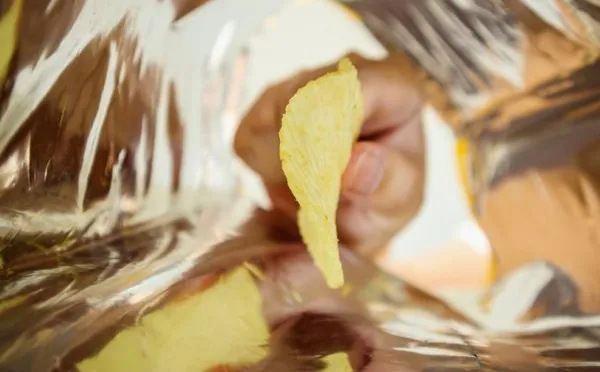A thin layer of vaporized aluminum inside the packaging keeps chips crisp and coffee aromatic. But it is precisely this oxygen-resistant layer that makes thin food packaging difficult to recycle. In addition, it costs a lot of energy to manufacture the packaging layer by layer. Researchers in Wageningen are working in a consortium on an energy-efficient and probable easily recyclable alternative. The solution might lie in a mix of positively and negatively charged polymers that together form a dense protective layer against oxygen.
Mix of polyelectrolytes
The possible alternative for aluminum in thin food packaging was discovered in the Advanced Research Center Chemical Building Blocks Consortium (ARC CBBC), a consortium in which various chemical companies and knowledge institutes have been working since 2016 on innovative chemical processes and materials. This specific study was a collaboration between Wageningen University & Research, the University of Twente, BASF and AkzoNobel. Jiaying Li, a PhD student at the University of Twente, focused on polyelectrolytes, a type of polymer that is water-soluble. These polyelectrolytes are already being used in the coating industry, but the ‘layer-by-layer’ method needed to make polyelectrolyte coatings is time-consuming and unsustainable. The solution now being studied by the consortium uses a mix of positively and negatively charged mixtures that bond because of their opposite charges. A base is added to this mixture to ensure that the polymer mixture remains fluid and homogeneous during the manufacturing process. During drying, the base evaporates and the polymers bind together, forming a strong oxygen-resistant barrier.

‘Potential environmental gain is big’
According to Jasper van der Gucht, Professor of Physical Chemistry and Soft Matter at Wageningen University & Research, this discovery is an important step on the road to more sustainable food packaging: “The gas-barrier features of these polymer-based coatings are at least equivalent to those of food packaging with aluminum coatings. Moreover, the potential environmental gain is big because polymer packaging is potential much easier to recycle.”
Industry is greatly interested in this new type of food packaging. Further research is needed to improve other features, such as water resistance and mechanical stability. This new coating also has to be tested in packaging practice and the recyclability of packaging with this coating will have to be investigated.
 For more information:
For more information:
Wageningen University & Research
www.wur.nl
